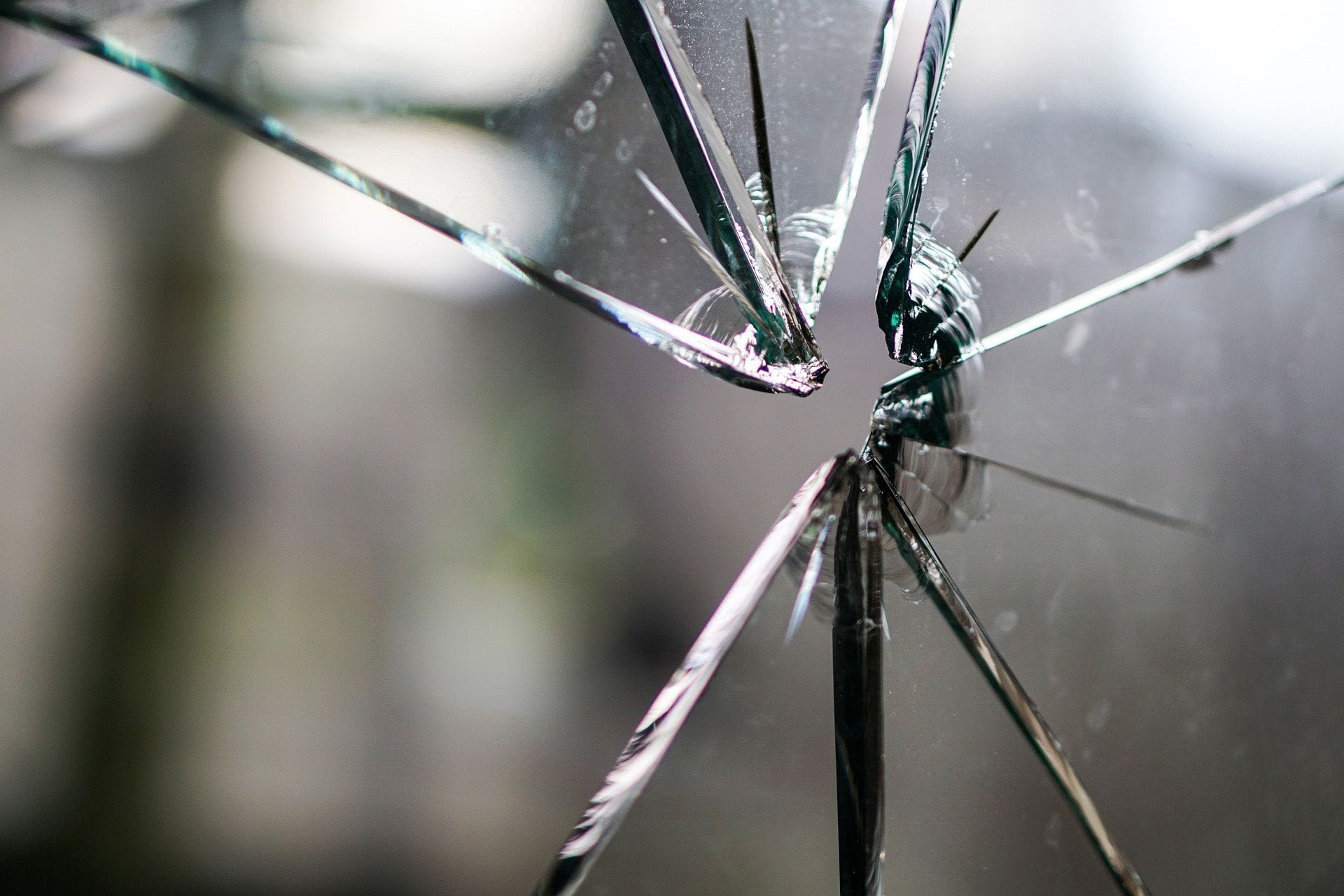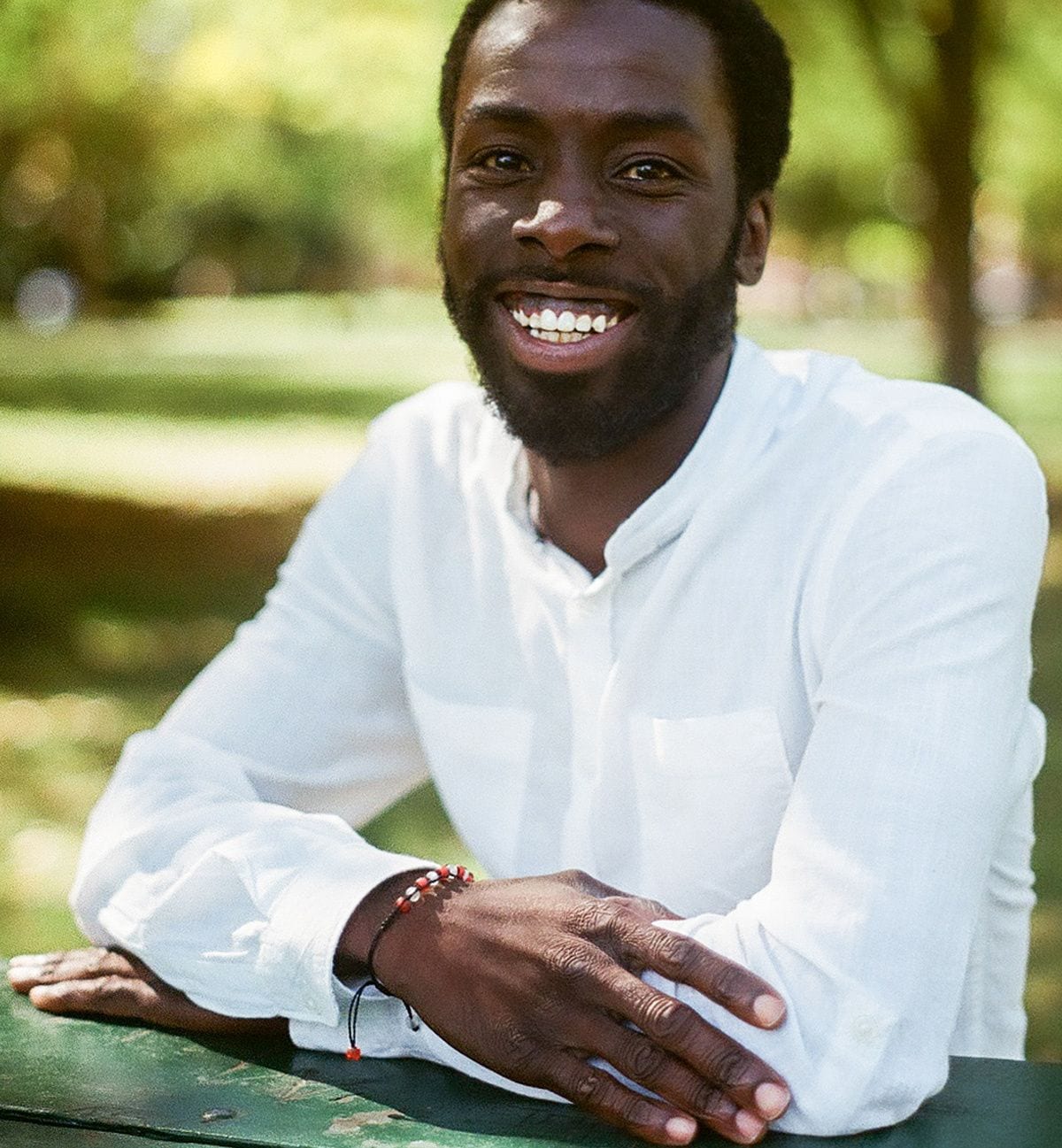
Talking with Americans about Canada’s problems is always a tough prospect.
Well, whatever the problem, it’s not as bad as things here, the American will inevitably respond.
Not the least of those problems shared by both countries is anti-Black racism. Canadian journalist
Desmond Cole‘s new book The Skin We’re In: A Year of Black Resistance and Power is a masterpiece of reporting on racism that will hopefully bury once and for all the misguided sentiment that things are better in Canada.
He addresses the point head-on: the inevitable juxtaposition with the United States serves not only as an excuse but a warning, a double-headed white-washed repartee with a menacing subtext.
“This idea that Canada’s racial injustices are not as bad as they could be – this notion of slavery lite, of racism lite, of what my friend calls the ‘toy version of racism’ – is a very Canadian way of saying ‘remember what we could do to you if we wanted to,'” Cole writes. “Passive-aggressive racism is central to Canada’s national mythology and identity. White supremacy warns Black people against setting our own standards and pursuing dreams that stray too far from the global atmosphere of anti-blackness.”
As a journalist, Cole’s personal and professional encounters with anti-Black racism are well-known in Canada. A prolific journalist, his popular column in the Toronto Star regularly tackled issues of race. He resigned from that paper in 2017 after facing pressure to write less on the topic, and following editors’ criticisms about his actions as a community activist. (He was arrested during a protest at a Toronto Police Services Board meeting that year.) His book describes these incidents in revealing detail, as well as the hypocrisy involved in editors pushing back on a Black journalist in a way they never do when it comes to white writers.
Other high-profile (white) activists were regularly given columns in the paper – Naomi Klein and Craig and Marc Kielburger, for example. One of his colleagues at the paper had written about an environmental demonstration she participated in, and The Star even defended her from critics. White women journalists had built notable careers by wedding their feminist activism with their reporting for the paper around issues such as reproductive rights, childcare and social services. In a manner that echoes the experience of trans journalist Lewis Raven Wallace, who was fired from his job at Marketplace in 2017, and the BBC’s Naga Munchetty in 2019 (and doubtless others as well), the incident reveals that certain types of activism are perfectly acceptable and condoned in mainstream media, and others are not.
“But the Star wasn’t concerned that I was breaking the rules,” Cole explains in his book. “They objected to how I was breaking them. I was…entirely too Blackety-Black for bow-tie man and his newspaper. The Star wanted my profile but not my voice, my ‘diversity’ but not my blackness.”
Cole’s personal experience is revealing, but hardly the most horrific of the events recounted in The Skin We’re In. The book’s clever structure takes the experience of a single year – 2017 – and uses it as a point of entry to examining Canada’s enduring and ongoing legacy of anti-Black racism. Cole selects an episode that occurred in each month of that year, and then explores it through a combination of historical analysis, investigatory research, and straightforward reportage. His selection of subject matter allows a vantage into the diverse range of anti-Black racism in Canada, from horrifying cases of police brutality to systemic policy discrimination against Black children, immigrants, and refugees to the country.
Light bulb by ColiNOOB (Pixabay License / Pixabay)
From Carding to Beatings
Targeted police violence against Black people and communities in Canada has a long history; Cole’s former paper, The Star, made important headway in revealing the scale and extent of ‘carding’, a Canadian innovation on US stop-and-frisk practices, which saw the Toronto Police Services amass an immense database on Black residents, regardless of whether they had committed crimes or not.
It’s impossible for anyone to live in a city such as Toronto and not witness the types of racism Cole describes. I’ll never forget the first time I witnessed carding, when I lived in the city. It was late afternoon on a Saturday, and I was walking through a fairly upscale Toronto neighbourhood with a friend. We were on our way to a punk show downtown, and had put tremendous effort into looking as mean and punk as possible: ripped pants, obscene band t-shirts, black army caps, garish hair, and I’m sure other horrifying fashion faux pas.
We paused at a park and were rambunctiously playing on the swings when I saw a police car approach. I naturally assumed they were coming to have a chat with us, but no. They saw but totally ignored us (who were white), and instead stopped an elderly bespectacled, grey-haired Black gentleman walking down the road in the opposite direction. So far as respectability goes, he was the stark opposite of us. He was wearing a distinguished-looking business coat and carrying an expensive-looking leather briefcase – probably an academic, or perhaps a businessperson. They got right in his face, surrounded him, and proceeded to brusquely demand IDs and carded the man, who looked for all the world like a grandfatherly professor. Astonished, I briefly locked eyes with the elderly gentleman, and will never forget the look of resigned frustration in his eyes as he politely cooperated with the angry demands of the gun-toting cops.
Carding and other systemic injustices play a prominent role in Cole’s book, but so do harrowing cases of police brutality. The case of Dafonte Miller is a case in point, and occupies a key chapter in the book. Miller, a 19-year-old resident of the town of Whitby, near Toronto, was with two of his friends when they walked past an open garage in which Michael Theriault, an off-duty Toronto police officer and his brother Christian were smoking and drinking beer. According to Miller, the beer-swilling off-duty officer called out to the three boys and demanded they identify themselves and their reason for being in the neighbourhood. When they refused to answer, the two brothers chased them down, caught Miller and beat him horrifically with a metal pipe.
Photo: kirahoffmann (Pixabay License / Pixabay)
They broke his nose and left orbital bone, dislodged his left eye from its socket, fractured his wrist and bruised his ribs; he later lost an eye as a result of the injuries. The boy managed to call 911 during the assault, but Theriault told the dispatcher he was an officer and had arrested Miller. The officers from the local Durham Regional Police Force, when they arrived, proceeded to charge the bleeding and broken boy with an array of charges, handcuffed and arrested him. Contrary to provincial legislation, neither the Durham Police Force nor the Toronto Police Services contacted the Special Investigations Unit, which is supposed to be called to investigate cases involving significant injury or death. In a ludicrous twist, one of the multiple and contradictory reasons later given for this by the Toronto police was that because the officer never identified himself as a police officer to the victim, it wasn’t within their mandate to investigate.
Eventually, Miller’s family obtained legal assistance and their lawyer broke the story; the two brothers were charged and the trial took place in late 2019 with a decision expected sometime this year. In the meantime, their father, a Toronto police detective, was also placed under investigation for interference in the investigation into his sons’ actions.
The Miller case is horrific, but only one of many in Canada’s sorry legacy of police violence against Black communities. Another case Cole explores is that of Abdirahman Abdi, a Somali-Canadian with known mental health issues who was killed by Ottawa police in July 2016. Following a complaint from a coffee shop owner, police tracked Abdi down and tried to arrest him, but he fled. Two officers caught him outside his apartment, pepper-sprayed him and proceeded to beat him to death. They would later claim he died of a heart attack due to a precondition. Horrified witnesses video-taped the killing.
After the fatal beating, officers handcuffed Abdi and chatted with each other rather than trying to administer first aid. They eventually called paramedics, without indicating that the situation was serious. Media investigations later revealed at least one of the officers had a previous history of violence against Black men. Constable Daniel Montsion was eventually charged with manslaughter, and the trial is ongoing.
Tragically, these cases are far from exceptional. A 2018 study by the Ontario Human Rights Commission revealed that Black residents were more likely to be killed or injured by police than white residents of the city.
“While black people made up only 8.8 per cent of Toronto’s population in 2016, the report found they were involved in seven out of 10 cases of fatal shootings by police during the latter period. It found that black people (and specifically black men) were overrepresented in everything from investigations into use of force and sexual assault by police, to inappropriate or unjustified searches and charges,” reported Molly Hayes for the Globe and Mail. Cole cites and discusses several of these other cases in his book as well.
Organized White Supremacy
One of the points Cole raises is the increasingly structured nature of racist organizing in Canada. When Abdi’s killer was put under investigation and charged, police associations across Canada mobilized with fundraisers and solidarity support for the officer.
“Police across Canada, and their supporters, felt comfortable paying for the privilege of wearing an accused killer’s ID number on their wrists,” writes Cole, of a wristband solidarity initiative. “Police understand that their ability to enact violence with impunity is the defining feature of their job. They know that if one officer’s use of force can be criminalized, all officers’ ability to use force indiscriminately is at risk, and they will stop at nothing to protect that power.”
It’s not just the police. Cole also discusses the case of Canada’s disgraced Canadian Airborne Regiment, which was disbanded after whistleblowers revealed their torture and murder of innocent Somali citizens during a ‘peacekeeping’ mission in that country in 1993. What was never adequately addressed, Cole notes, was the impunity with which neo-nazi and racist organizations had been allowed to organize at military bases, and which preliminary investigations into the affair revealed. The issue has come under recent scrutiny as well, following media revelations of multiple chapters of white supremacist organization the Proud Boys within the Canadian Armed Forces.
“Canadians still don’t understand the extent of the white supremacist organizing our government uncovered within the military twenty-five years ago,” writes Cole. And it has never really gone away.
Racism and Pride
Cole’s book covers a lot of ground, and offers an expansive introduction to anti-Black racism in Canada, yet the extent of the problem is such that even he can only scratch the surface. Importantly, he acknowledges the intersection of anti-Black racism with other forms of racism and discrimination. He devotes an important chapter to the incredible work of Black Lives Matter – Toronto (BLM-TO), which has been organizing since 2014 but came to international prominence in 2016. The same year it was designated an “honored group” by Pride Toronto, it shut down the city’s annual Pride Parade until Pride Toronto organizers acquiesced to a list of demands (a commitment which Pride Toronto’s Executive Director recanted the next day).
BLM-TO’s actions during the Pride Parade have been fiercely debated ever since — particularly as they helped to spark an international debate about the role of police and corporatization in Pride. Yet as Cole reveals, their action was rooted within a lengthy and ongoing struggle for space and recognition by Black queer and trans people in Toronto Pride.
“Black queer and trans people challenged the increasing corporatization of Pride while also resisting their marginalization and exclusion by white queer and trans communities,” he writes. He offers the historical context most media coverage omitted: the repeatedly disrespectful and second-rate treatment of Black queer events like Blockorama (organized by Blackness Yes!) by Toronto Pride. Toronto police, meanwhile, have not only failed to deploy meaningful actions to investigate or prevent the murders of Black trans women in the city, but continued to raid queer bathhouses as recently as 2000, and then sought to enter the parade driving prison busses bedecked in pink with “stop bullying” banners.
BLM-TO’s protest was accompanied by nine demands, which came “from more than three decades of struggle among Black queer people for recognition and support at Pride…BLM-TO and allies used their disruption to highlight the struggles of Indigenous peoples, South Asian people, and deaf people, and to demand better supports for them,” writes Cole. Removal of police floats from the parade was only one of those demands, despite its being the one most media fixated on. This coverage – and the affront displayed by mostly white commentators who spoke and wrote against the BLM-TO action – “sought to completely rewrite the history of Pride – a revolt against the hateful policing of queer people – as a non-descript celebration of ‘inclusion,'” he explains.
Indigenous Solidarity
Queer and trans folk are not the only group whose struggle against violent policing has intersected with the struggle against anti-Black racism, Cole reminds readers.
“It has taken me most of my life to even grasp the connection between my struggle as a Black Canadian and the struggle of Indigenous peoples on these stolen territories,” he writes. “My ancestors and the Indigenous people…have a critical common experience: both were oppressed by a group whose legacy is so unquestioned today that we usually don’t even name it. But someone had to compel Indigenous peoples here to sign treaties to ‘share’ their land and resources, and someone had to build a slave post on Bunce Island in Sierra Leone and force my ancestors onto slave ships.”
That “someone” is white settlers and colonizers, of course. Cole devotes space in his book to exploring state persecution of Indigenous peoples, and to the relationship between policing practices that target Indigenous peoples and those targeting Black residents.
What they both have in common, of course, is the protection of white supremacy.
“The modern incarnation of whiteness resists exposure and definition – white supremacy thrives in large part by avoiding being named or identified…White has been celebrated and defended more overtly at other times in history, but today whiteness is often about endless disavowal. Whiteness pretends to forget its own name when called, and refuses to acknowledge its desire for dominance. White supremacy keeps stepping on your toes while insisting it was an accident,” he writes.
And of course, when white supremacy is called out, it defends itself by trying to juxtapose its own violence against the purported violence of those it exploits and oppresses.
“When confronted with its own violence, whiteness simply flips the script. I know you are but what am I? Whiteness can rhyme off the sins of blackness even as it resists any collective agency or responsibility for itself. So long as the spectre of blackness looms largest, whatever whiteness is doing cannot be so bad, or at least can’t be worth mentioning.”
Cole, who in addition to his written work also hosts a radio news talk show in Toronto, is one of the most talented and insightful journalists working in Canada today, and his new book further cements this reputation. The Skin We’re In is critically important reading for all Canadians. If it leaves white Canadians with a shaken sense of national pride, that can only be a good thing – and perhaps the first step toward confronting racism seriously and building a nation for which all Canadians truly can be proud.
Photo of Desmond Cole by © Kate Yang-Nikodym (courtesy of Doubleday Canada)
CBC Radio interview with Cole about his book: Listen here.
Additional Sources Cited
Cole, Desmond. “I choose activism for Black liberation“. Thatsatruestory.Wordpress.com (not dated)
Foot, Richard. “Somalia Affair“. The Canadian Encyclopedia. 5 November 2018.
Gillis, Wendy. “What we learned in 10 days at the trial of Michael and Christian Theriault, accused of beating Dafonte Miller”. The Star. 16 November 2019.
Hayes, Molly. “Black people more likely to be injured or killed by Toronto Police officers, report finds”. The Globe and Mail. 10 December 2018.
McMillan, Elizabeth. “Military personnel in Proud Boys incident return to regular duty”. CBC Canada. 31 August 2017.
Osman, Laura. “Montsion showed ‘wanton’ disregard for Abdi’s life, Crown argues”. CBC Canada. 3 January 2020.
Paradkar, Shree. “It was wrong to rein in Desmond Cole: Paradkar”. The Star. 12 May 2017
Rollmann, Hans. “‘The View from Somewhere‘ Exposes the Dangerous Myth of ‘Objective’ Reporting”. 18 October 2019. PopMatters.
Waterson, Jim. “Naga Munchetty: BBC reverses decision to censure presenter”. The Guardian. 30 September 2019.
Various. “Race and Crime“. The Star. (landing page)
- The Skin We're In by Desmond Cole | Penguin Random House ...
- The Skin We're In by Desmond Cole: 9780385686341 ...
- Journalist Desmond Cole on How the Toronto Star Tried to Silence ...
- The Skin I'm In: I've been interrogated by police more than 50 times ...
- Desmond Cole | Facebook
- negro frolics (@DesmondCole) | Twitter




